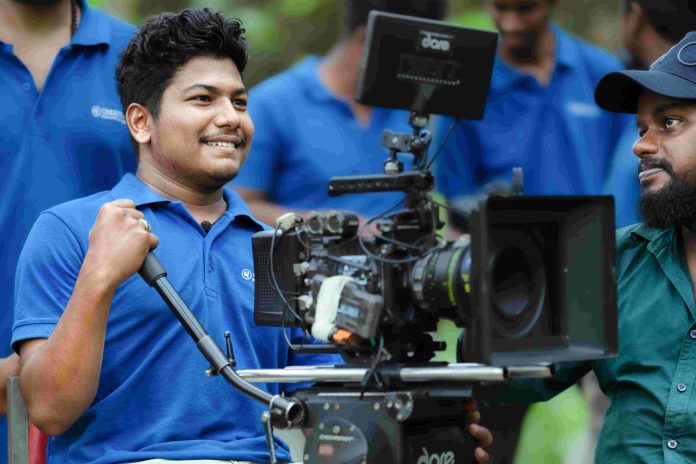Kerala has a rich cultural heritage.The state is well-known for its traditions not just in India but also abroad because National Geographic Traveller Magazine named it one of the “Top ten paradises of the World.” There are almost 50 different types of dance forms in Kerala,some of which are presented in this article.
Kathakali
Kathakali is a 300-year-old Keralan traditional dance form. Everyone is familiar with this traditional dance style from Kerala, but very few know that it takes 12 years of education to become an expert in the choreography and motions . A few centuries back, Kathakali was unknown to the world as it was performed secretly inside the temple premises as a part of temple rituals.
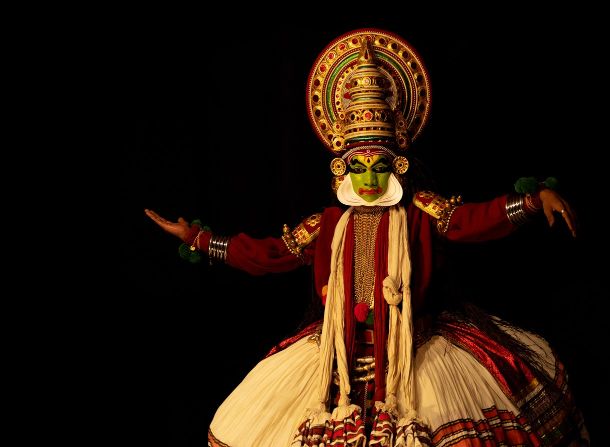
A play of expressions: Kathakali artist at the end of his performance
Kathakali has 101 classical epic stories from Mahabharata and Ramayana which were initially composed to last a whole night, but now a days ,only the most popular and dramatic portion of the story is selected. The modern performances are shortened to 3-4 hours.Kathakali involves the use of facial expressions and hand gestures (known as Mudras) to express the ideas/emotions. Artists dress themselves in colorful facemakes and costumes to play the roles of various Gods and Demons. These roles (both male and female roles) in a rhythmic way in the form of ‘Ragas’ based on Sanskrit and Malayalam.
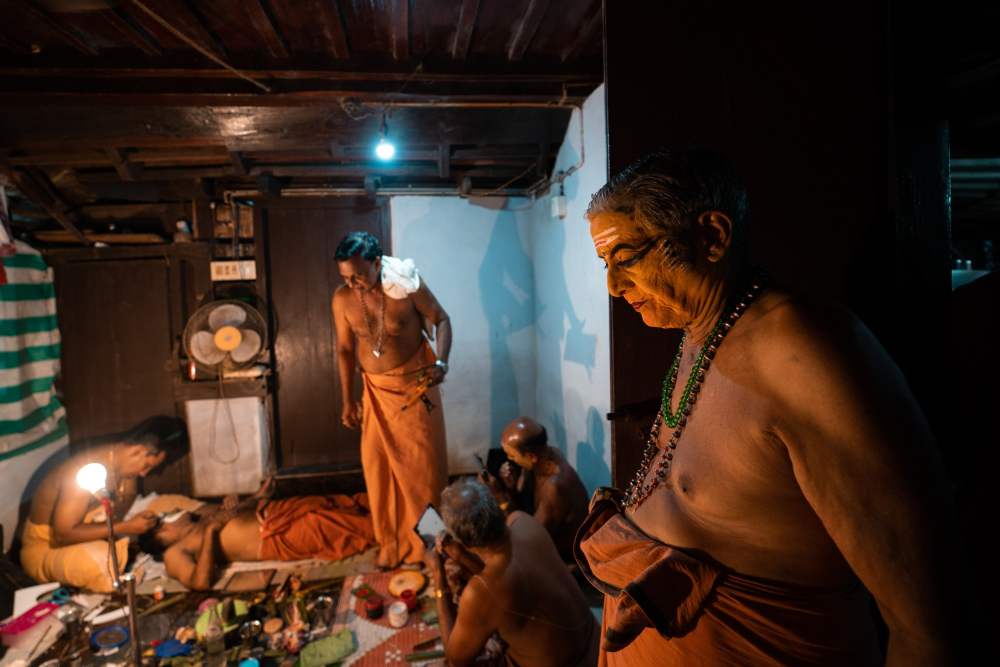
Makeup room: Artists getting ready for their performance
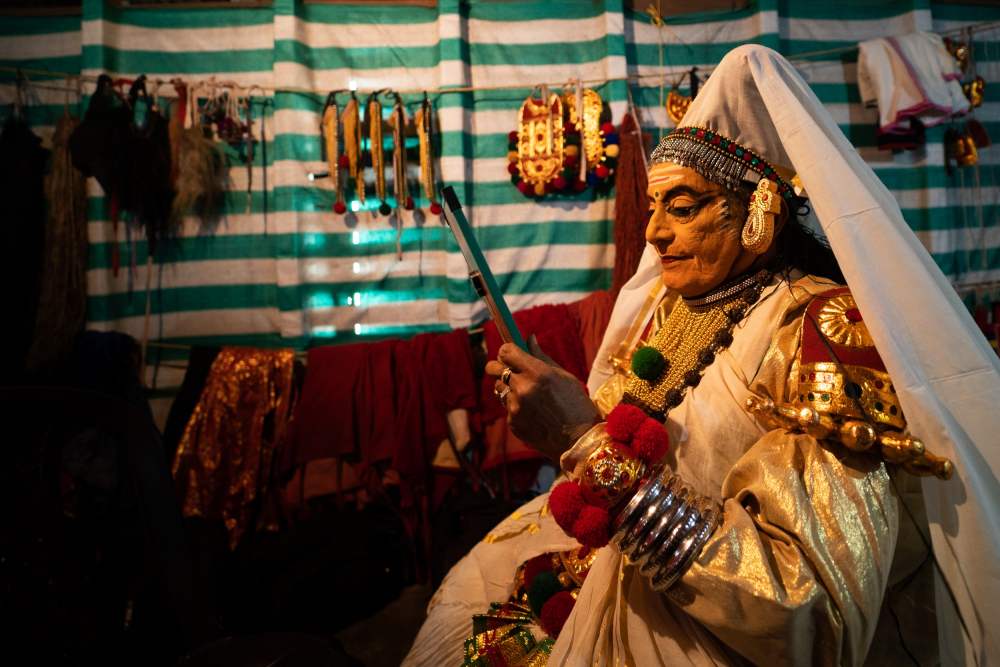
Final touch: Ready to perform
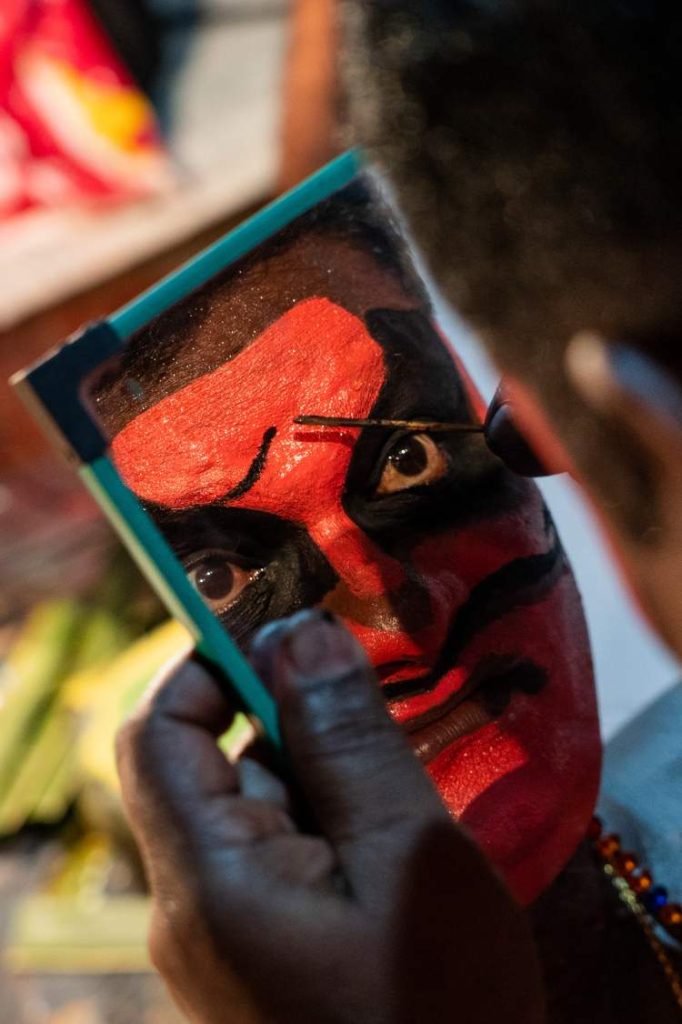
Get ready for performance
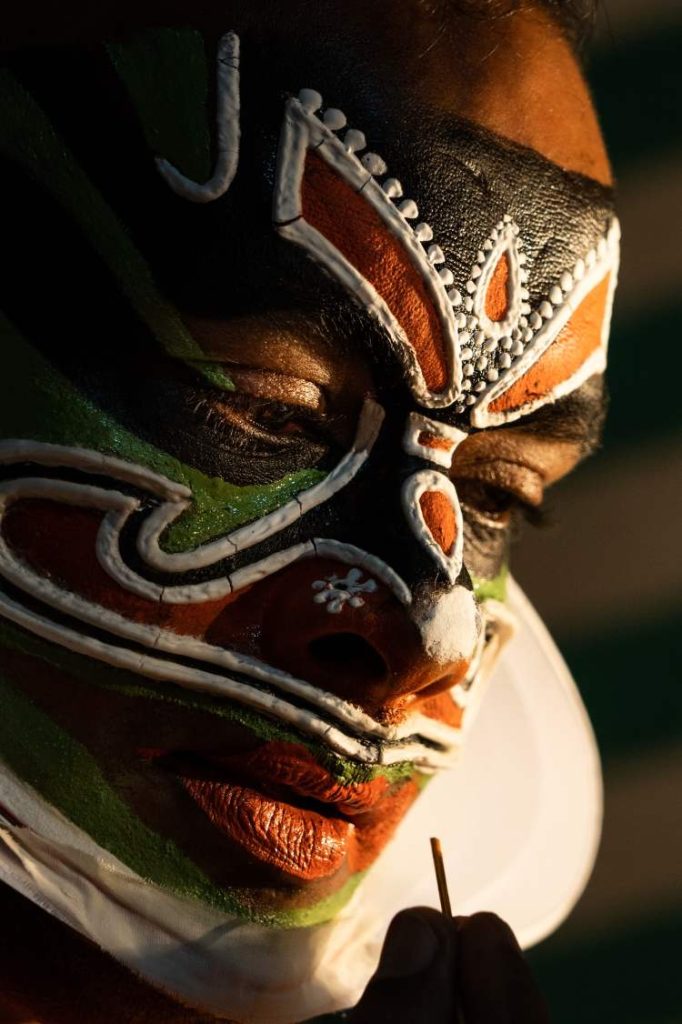
Make up
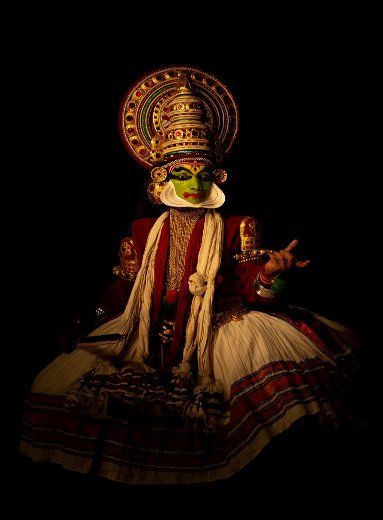
On the stage: Artist during his performance
Mohiniyattam
Mohiniyattam,one of the eight classical dances of India ,is an interpretation of dance performed by Mohini, a female avatar of Lord Vishnu.Like Kathakali,Mohiniyattam was also originated in Kerala but there is a major difference between the both. While Kathakali is performed by only male actors/dancers,Mohiniyattam is performed by only females.
The outfit of the dancer itself depicts her elegance.The costume worn in Mohiniyattam is influenced by the traditions and climate of Kerala.The off-white cream coloured saree embroided with golden laced border,simple facial makeup and gold ornaments worn during the performance clearly depicts that the dance form has is its origin Kerala. The tika on the forehead and hair ringed with vibrant flowers makes the dancer even more graceful. A heavy makeup around the eyes of the dancer is done to make eye movements more visible.
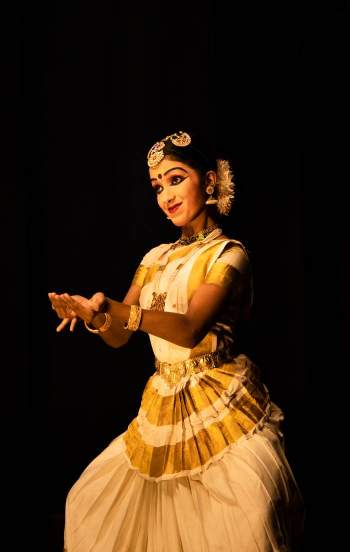
An elegant interpretation: Dancer interprets Mohini during her performance
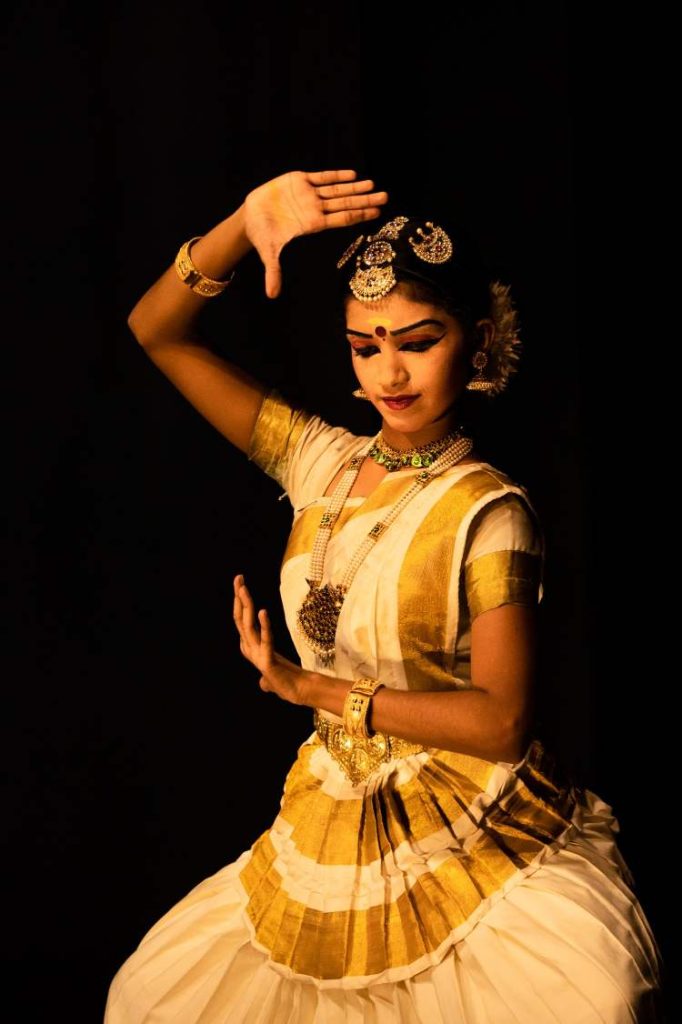
Soft expressions: Pleasing eye movements and gestures of the dancer
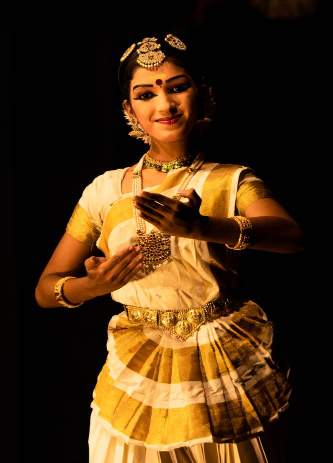
Graceful end: Finishes off the performance in elegant way
Padayani
Padayani is a ritual art form originated in Kerala. It is performed in Bhagavati temples in central region of Kerala during nights in the months of December to May.
The most interesting part of Padayani is the dance of Kolams. Different Kolams come and dance on different stories related to goddess Kali overnight .These Kolams wear masks which are prepared inside the temples. These masks are made using the spathes of arecanuts tree .The colors used to paint these masks are obtained from nature . The red is obtained by grinding red stones, black by burning coconut shells, while the yellow is obtained by grinding turmeric.
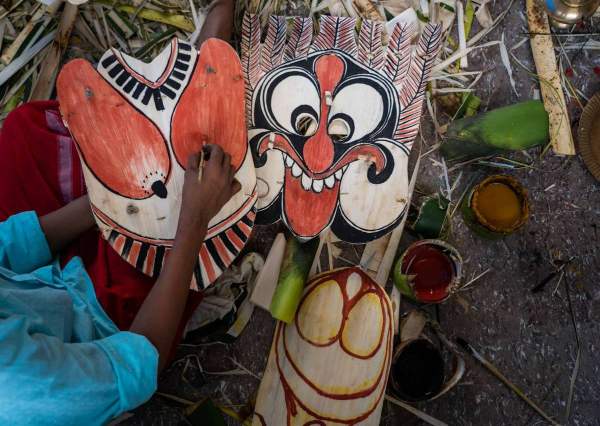
Making of Kolams: Kolams being Painted with natural colors.
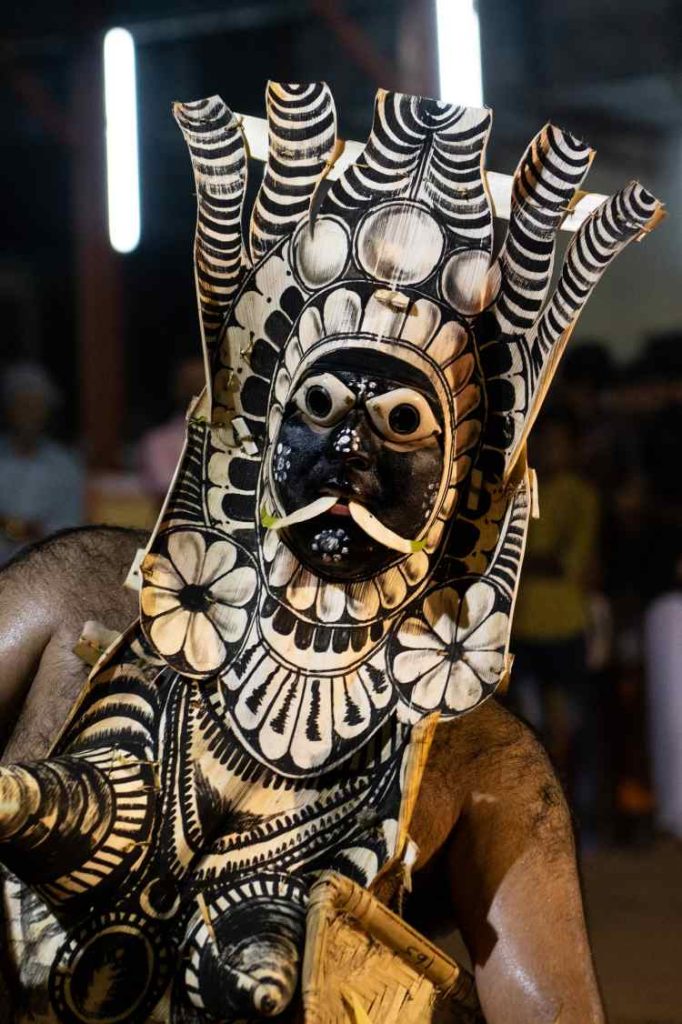
Kari Marutha Kolam: The dance of this Kolam express motherhood and devotion
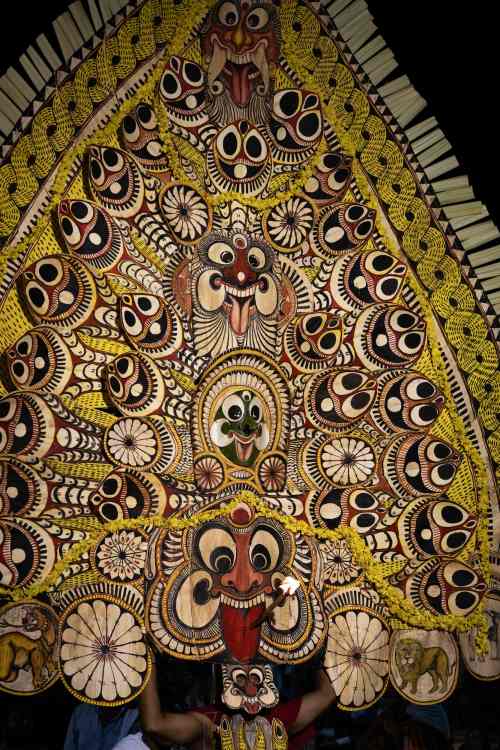
Bhairavi Kolam : The biggest Kolam that performs in Padayani
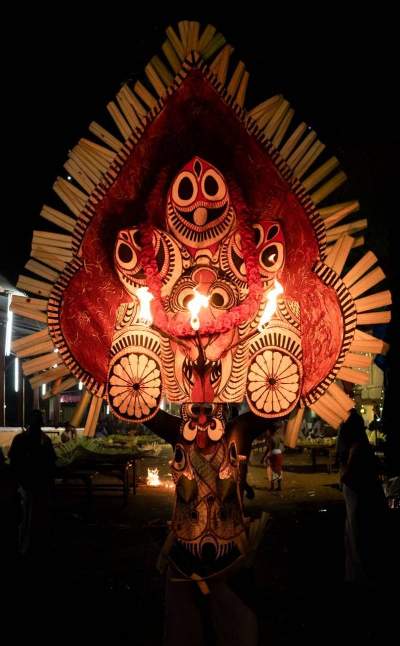
Bhadrakali Kolam : Another form on Bhairavi Kolam
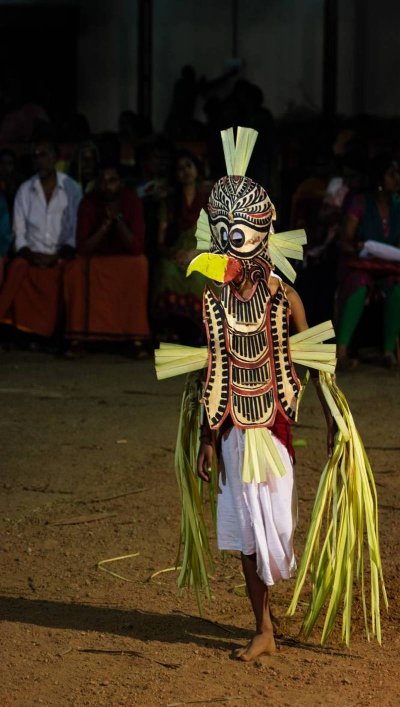
Pakshi Kolam: Bird that protects from diseases
Students Work
Theyyam
One of Kerala’s oldest rites, theyyam, is claimed to be conducted throughout the Malabar region.It is held once a year in the months of November to April. The word ‘Theyyam’ is derived from two words namely ,’ deviam’ and ‘attam’ . Deviam means God and attam means dance.Therefore, Theyyam is often referred to as “Dance of Gods.” There are more than 400 different types of theyyams, but only about 60 of them are common nowadays. Each of them represents a particular God. Each has a different costume , makeup, ornaments and a pattern of dance which he has to follow during the performance.
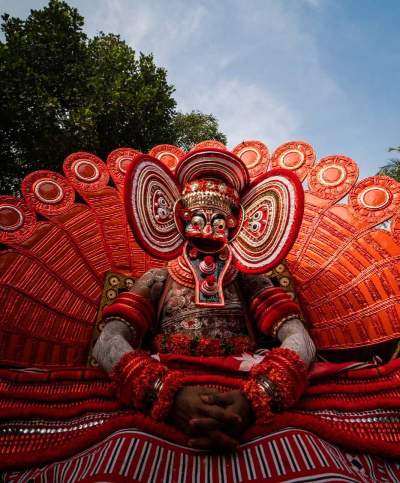
God of Malabar: Ready to perform in deity’s outfit.
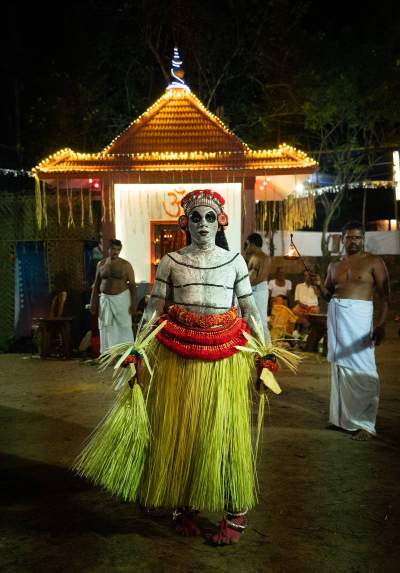
Gulikan Theyyam
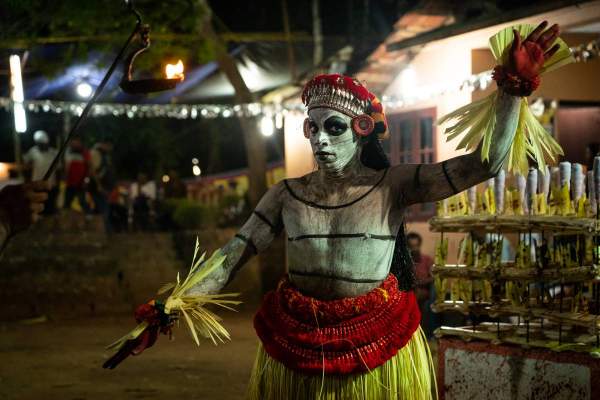
Fierce look from the god of life and death
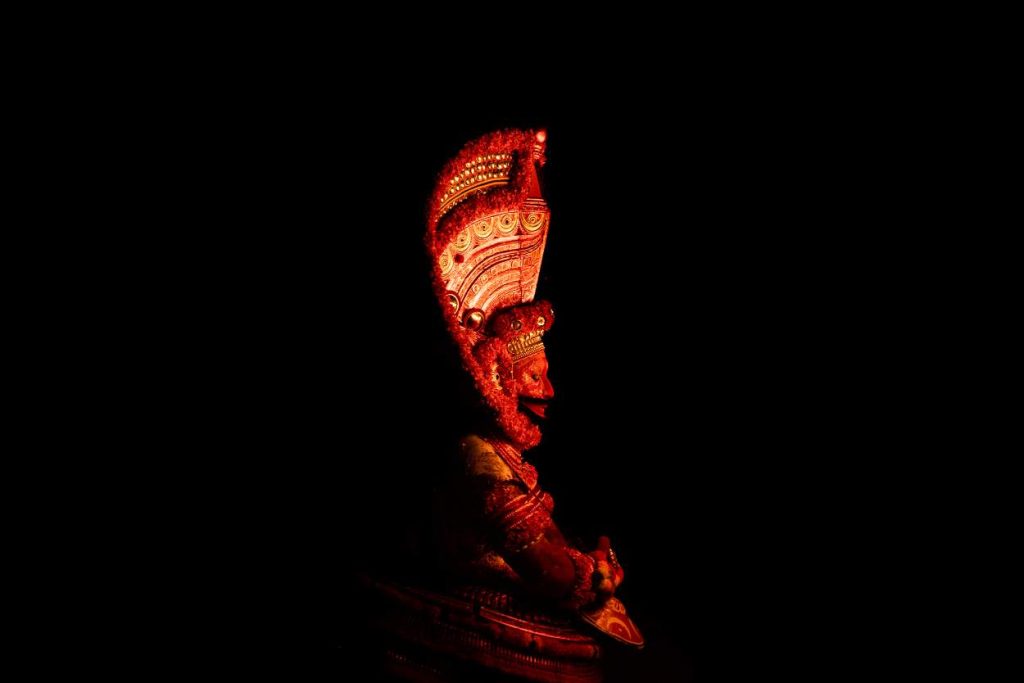
Kathivanur Veeran: A great warrior
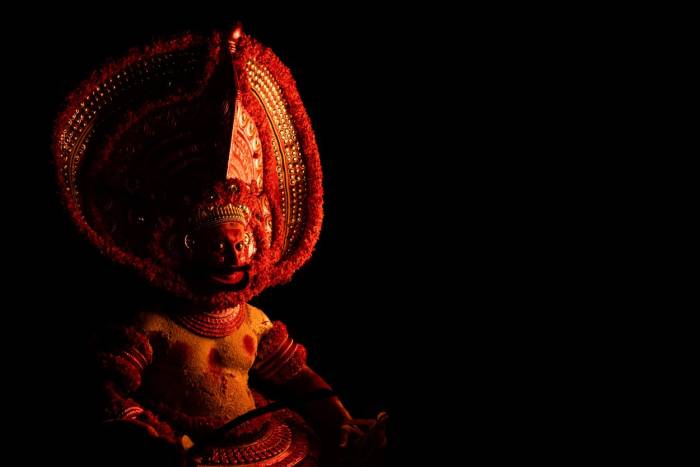
Through the darkness: A glance from god through darkness
The belief behind Theyyam is to bring peace and prosperity in the society.It is thought that the gods’ dance keeps wickedness out of society. Theyyams often take place for more than one day in which different theyyams in vivid red costumes are honoured . Even some performances include the use of fire which often take place before dusk. Also , there are a few Theyyams who wear big headgears as long as 50 feet.
Theyyam is one of the rare rituals that continues to be carried out in its traditional form in today’s day of modernization.We are quite fortunate that we can still observe it happening today.
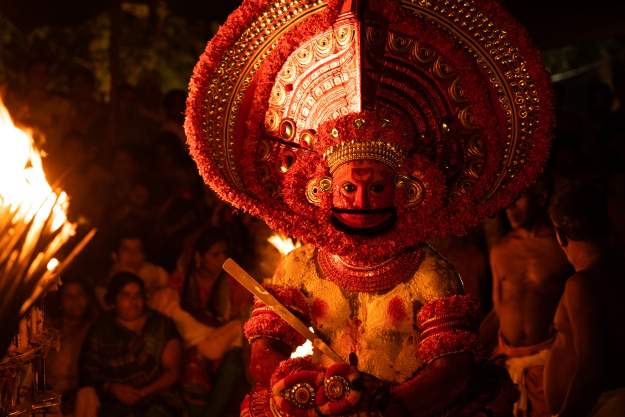
A stolen glance
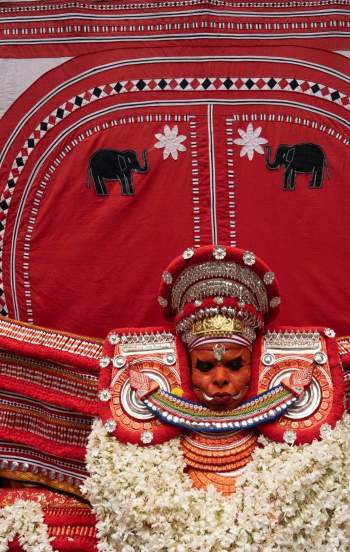
God man: Wearing a big header during the performance.
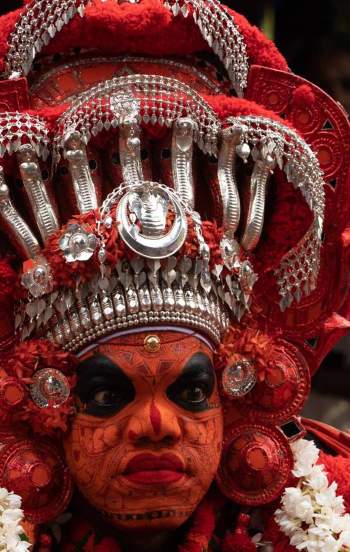
A brief look from the dancing god
Copyrights:
All the photos and text in this post are copyright of Abhishek Dhupar,Ropar, Punjab, Creative Hut Institute of Photography.Their reproduction, full or part, is forbidden without the explicit approval of the rightful owners.


